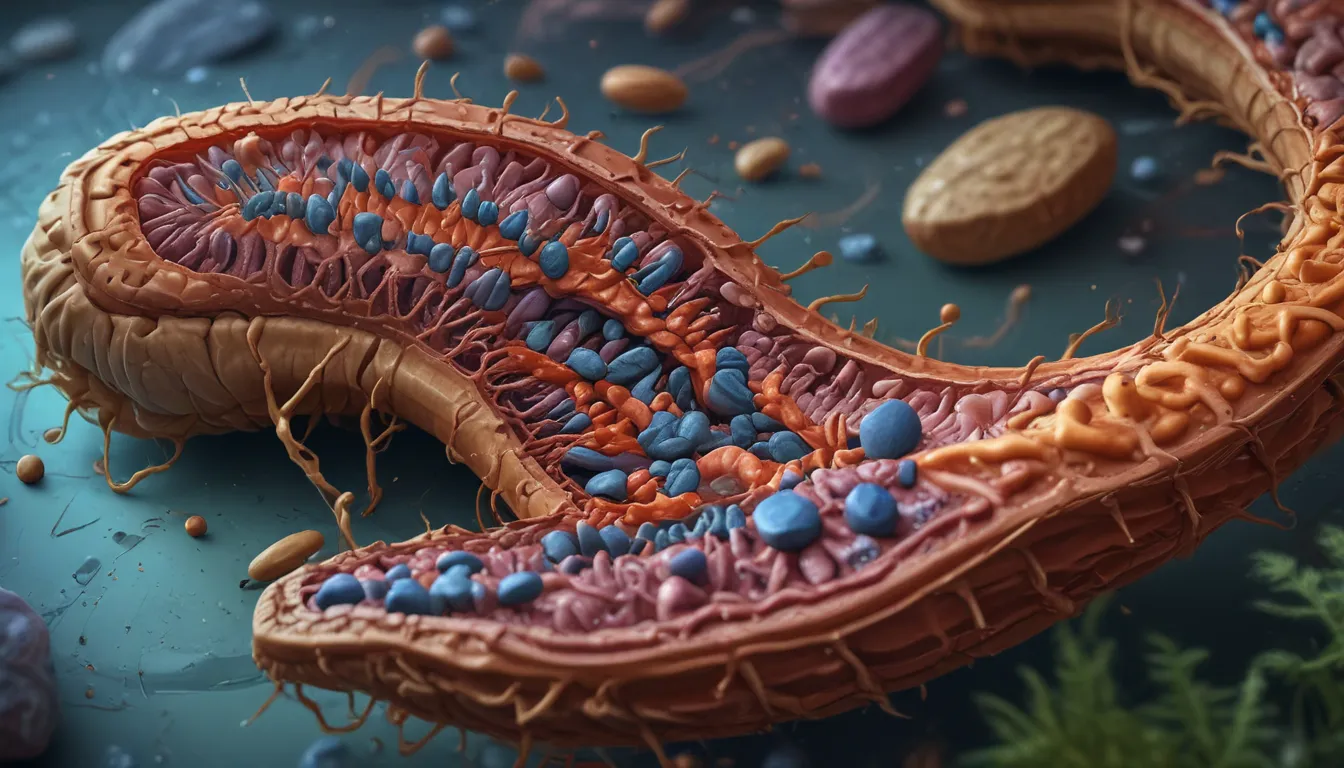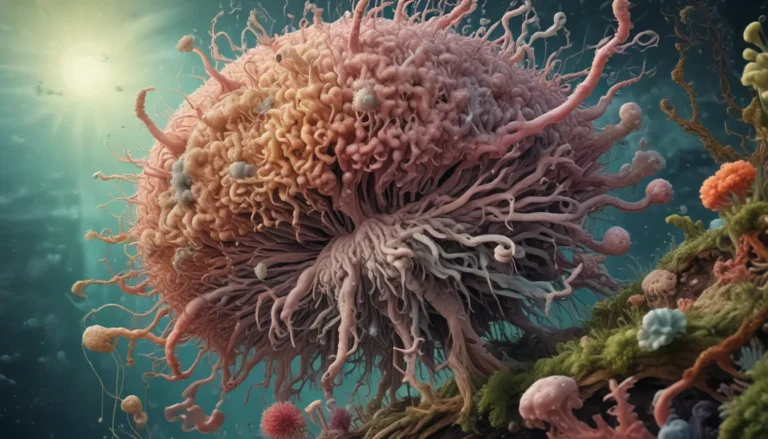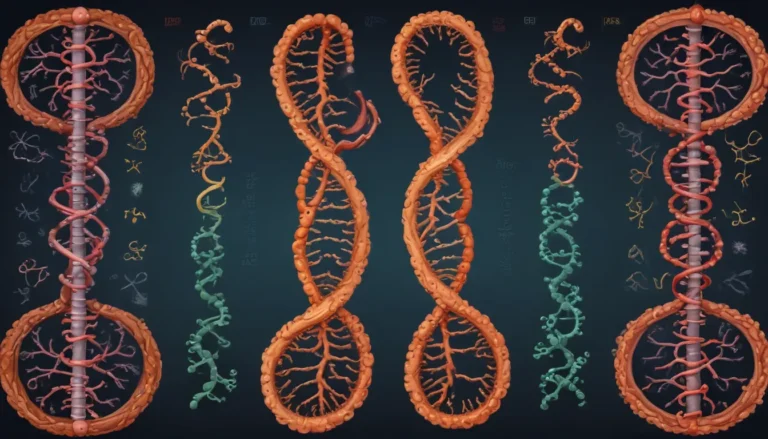A Note About Images: The images used in our articles are for illustration purposes only and may not exactly match the content. They are meant to engage readers, but the text should be relied upon for accurate information.
Mitochondria, often hailed as the “powerhouses of the cell,” are captivating organelles that play a vital role in energy production and cellular functions in eukaryotic organisms. These double-membrane structures have a plethora of intriguing characteristics that set them apart from other cellular organelles. In this article, we will embark on a journey to uncover fun facts about the unique structure, functions, and significance of mitochondria in the realm of biology. Join us as we unravel the mysteries of mitochondria and their profound impact on life as we know it.
The Marvel of Mitochondrial Structure
At the core of mitochondria lies a unique structure that distinguishes them from other cellular organelles. Comprising an outer membrane, an inner membrane, and an intermembrane space, mitochondria house a complex network of folds known as cristae. These cristae dramatically increase the surface area available for energy production within the organelle.
Circular DNA: Unveiling a Genetic Marvel
A standout feature of mitochondria is their circular DNA, a stark contrast to the linear DNA found in the cell nucleus. The circular nature of mitochondrial DNA (mtDNA) facilitates efficient replication and transcription processes within the organelle, contributing to its vital functions in energy production and cellular metabolism.
The Impact of High Mutation Rate
Mitochondrial DNA boasts a higher mutation rate compared to nuclear DNA, primarily attributed to its proximity to reactive oxygen species generated during energy production. Furthermore, the absence of robust DNA repair mechanisms within mitochondria accentuates the susceptibility to mutations. These mutations can lead to a spectrum of mitochondrial diseases, underscoring the critical role of mtDNA in maintaining cellular health.
Unveiling the Power of ATP Production
Central to the functions of mitochondria is the production of adenosine triphosphate (ATP), the primary energy currency of cells. Through the process of oxidative phosphorylation, mitochondria harness energy from the breakdown of carbohydrates, fats, and proteins to generate ATP, essential for powering various cellular processes and maintaining overall cellular function.
Delving into Mitochondrial DNA Dynamics
In a departure from conventional organelles, mitochondria harbor their own genetic material in the form of mitochondrial DNA. This circular DNA, distinct from nuclear DNA, encodes crucial proteins essential for mitochondrial function and inheritance, emphasizing the organelle’s autonomy in genetic processes.
The Origins of Mitochondrial Evolution
Mitochondria present a compelling evolutionary tale grounded in the endosymbiotic theory, positing an ancient symbiotic relationship between a eukaryotic cell and a prokaryotic organism. This symbiosis contributed to the integration of the prokaryotic organism into the host cell, giving rise to the mitochondria observed today, shedding light on the intricate origins of these indispensable organelles.
Tracing Maternal Lineages: A Mitochondrial Legacy
In most organisms, mitochondria are exclusively inherited from the mother due to the destruction of paternal mitochondria in sperm cells post-fertilization. This unique inheritance pattern has propelled mitochondrial DNA to the forefront of genetic studies, enabling the tracing of maternal lineages and unraveling the intricate web of human ancestry.
Unraveling the Mystery of Mitochondrial Eve
Mitochondrial DNA serves as a valuable tool in studying human ancestry, epitomized by the “Eve Hypothesis.” This hypothesis traces all living humans back to a common maternal ancestor, colloquially known as “Mitochondrial Eve,” who lived in Africa approximately 150,000 years ago. Through the analysis of mtDNA variations, scientists have elucidated the lineage of this ancestral figure, enriching our understanding of human migration patterns.
Embracing the Concept of Heteroplasmy
Mitochondrial DNA presents a complex phenomenon known as heteroplasmy, characterized by the coexistence of multiple copies of mtDNA with diverse sequences within an individual. This variability contributes to the complexity of mitochondrial diseases, imparting distinct manifestations and degrees of severity across different tissues, highlighting the dynamic nature of mitochondrial genetics.
The Dynamic Nature of Mitochondria
Contrary to the static portrayal of organelles, mitochondria embody dynamic and mobile structures within the cell. Through processes of fusion and fission, mitochondria constantly adapt their shape, size, and distribution in response to cellular energy demands, underscoring their pivotal role in maintaining cellular homeostasis.
Illuminating the Essence of Energy Generation
Mitochondria stand as beacons of energy generation within cells, fueling vital cellular processes through the production of ATP. The seamless synthesis of ATP within mitochondria is indispensable for the proper functioning of tissues and organs, sustaining physiological processes in critical organs such as the brain, muscles, and heart.
Mitochondrial Disorders: A Consequence of Genetic Anomalies
Disruptions in mitochondrial DNA integrity can precipitate mitochondrial disorders, a group of genetic diseases characterized by impaired energy production and cellular dysfunction. These disorders manifest in a spectrum of symptoms ranging from muscle weakness to neurological impairments, emphasizing the intricate interplay between mitochondrial genetics and human health.
Unraveling the Nexus Between Aging and Mitochondria
The intersection of mitochondrial function and aging has captivated scientific inquiry, with mitochondrial DNA mutations accumulating over time and compromising mitochondrial function. This cumulative damage, coupled with increased oxidative stress, has bolstered the hypothesis linking mitochondrial dysfunction to the aging process and age-related diseases, offering insights into potential interventions targeting mitochondrial health.
Unveiling the Impact of Mitochondria in Exercise
The symbiotic relationship between mitochondria and exercise is profound, with physical activity enhancing mitochondrial function and promoting the growth of healthy mitochondria. Through regular exercise, individuals can optimize ATP production and revitalize energy metabolism, underscoring the pivotal role of mitochondria in sustaining physical fitness and overall well-being.
Mitochondria: Pioneers in Disease Research
The burgeoning field of mitochondrial research holds immense promise in unraveling the complexities of various diseases, including neurodegenerative disorders, cancer, diabetes, and cardiovascular diseases. By elucidating the role of mitochondria in disease pathogenesis, scientists aim to develop targeted therapies that harness the intrinsic properties of mitochondria to drive advancements in medical interventions, offering hope for innovative treatments in the realm of precision medicine.
Conclusion: A Tribute to the Enigmatic Mitochondria
In conclusion, mitochondria emerge as enigmatic powerhouses that illuminate the intricate tapestry of cellular function and human health. From their unique structural features and evolutionary origins to their pivotal roles in energy production and disease research, mitochondria encapsulate a realm of scientific wonders that transcend traditional boundaries. Through the exploration of mitochondria, we not only deepen our understanding of cellular biology but also gain profound insights into the fundamental mechanisms that govern life itself, underscoring the enduring allure of these indispensable organelles.
Frequently Asked Questions (FAQs)
Can mitochondria be found in all cells?
Mitochondria are prevalent in most eukaryotic cells, spanning diverse organisms such as plants, animals, fungi, and protists. However, specific specialized cells, such as mature red blood cells, notably lack mitochondria due to their specialized functions.
How many mitochondria are present in a cell?
The quantity of mitochondria within a cell varies based on the cell type and its energy demands. Cells with heightened energy requirements, such as muscle cells, may harbor thousands of mitochondria, while others may possess a few or none, adapting to their distinct physiological needs.
Can mitochondria undergo replication?
Indeed, mitochondria possess the remarkable ability to replicate independently of the cell’s nuclear DNA, facilitated by their autonomous circular DNA. This intrinsic capability enables mitochondria to proliferate and scale their numbers in response to cellular energy demands, ensuring an optimal supply of ATP for cellular functions.
Are mitochondria solely responsible for energy production?
While energy production remains a core function of mitochondria, these organelles play multifaceted roles in diverse cellular processes beyond ATP synthesis. Functions such as calcium signaling, apoptosis regulation, and molecular synthesis actively involve mitochondria, showcasing the versatility and indispensability of these dynamic organelles in cellular physiology.
Can mitochondria be inherited?
Mitochondria follow a predominantly maternal inheritance pattern, as the paternal mitochondria are typically eliminated post-fertilization. This maternal lineage transmission underscores the significance of mitochondrial DNA in genetic studies and human ancestry research, offering valuable insights into the genetic legacy passed down maternally.
Your Feedback Matters
Your engagement and contributions are pivotal in our quest to deliver accurate, engaging, and informative content. Each fact shared on our platform is a testament to the diverse insights contributed by real users like you, driving our commitment to authenticity and quality. Trust in our dedication to unraveling the wonders of science and learning as we journey together in exploration and discovery. Thank you for being part of our community of curious minds.






